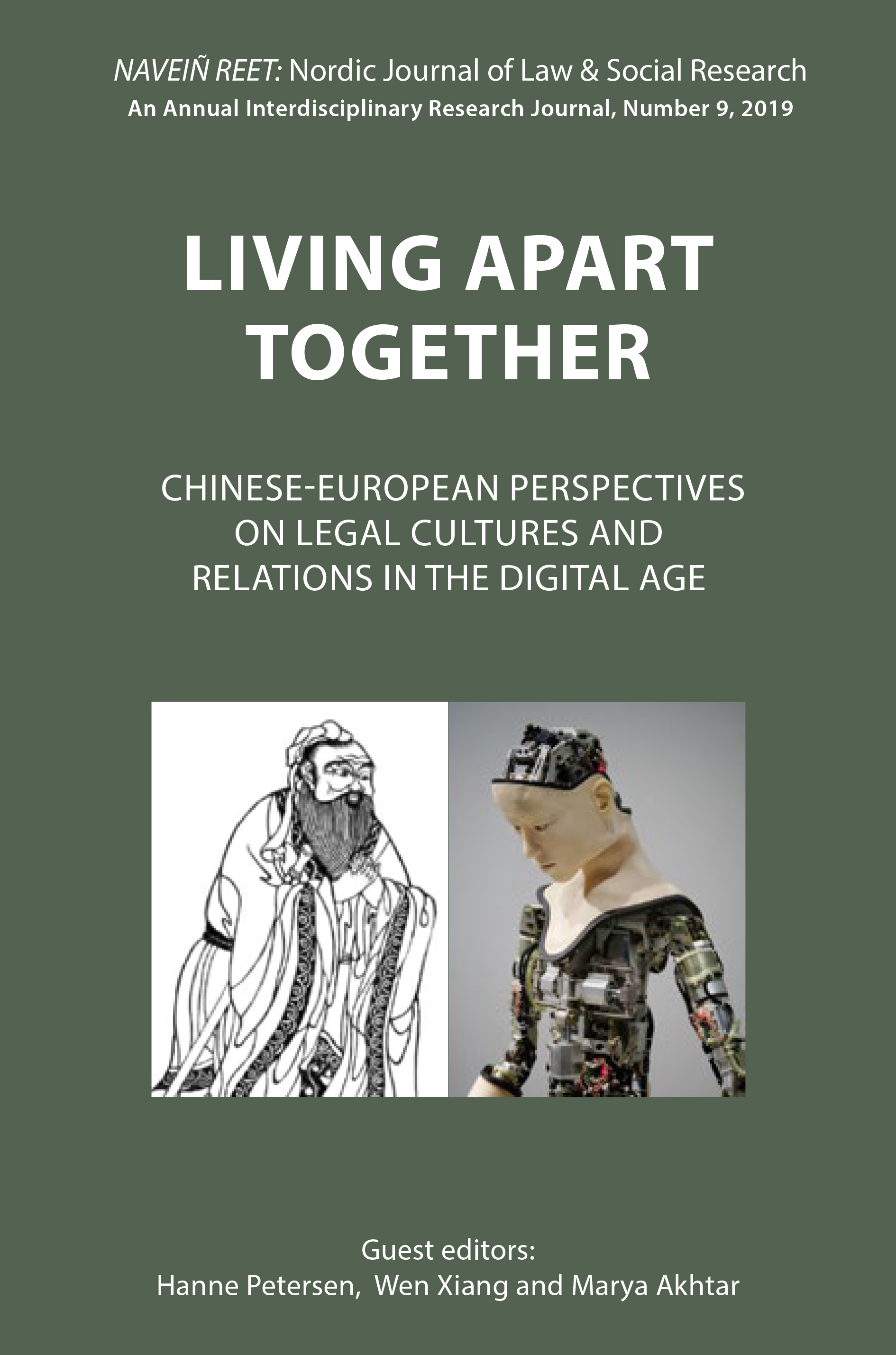Family Revolution by Law
Research on Development and Reform of Chinese Marriage Law
DOI:
https://doi.org/10.7146/nnjlsr.v1i9.122150Resumé
The basic function of law is to protect, consolidate and develop social relations and social order that are favorable and suitable for the ruling class (Zhu, 1957). As the first law promulgated (April 13, 1950) after the founding of the People’s Republic of China (PRC, October 1, 1949), the Marriage Law has undergone three major revisions in 70 years. Based on a comparative analysis of the principles and important rules in the four marriage laws, this article studies the entire historical process of Chinese marriage law systematically. By combining amendments of laws with social changes, including party policies (Communist Party of China, CCP), economic systems and family structure, this article displays the intimate relationship between social change, law revision and family revolution in an interdisciplinary manner. The improvement of Chinese marriage law also provides a lens into Chinese lawmakers’ efforts on achieving gender equality, offering special protection for vulnerable groups to pursue substantive justice, protecting personal property and balancing the relationship between individual freedom and family and social stability.
Downloads
Publiceret
Citation/Eksport
Nummer
Sektion
Licens
Counting from number 12 (2022), articles published in NNJLSR are licensed under Attribution 4.0 International (CC BY 4.0). Readers are allowed to copy and redistribute the articles in any medium or format, to adapt and revise the articles, and use the articles for commercial purposes, provided that the readers give appropriate credits.
No Creative Commons licenses are applied on articles in number 1 (2009)-11 (2021). All rights reserved by the authors. Readers are allowed to download, read, and link to the articles published in volume 1 (2009)-11 (2021), but they may not republish or redistribute these articles without permission of the authors.

